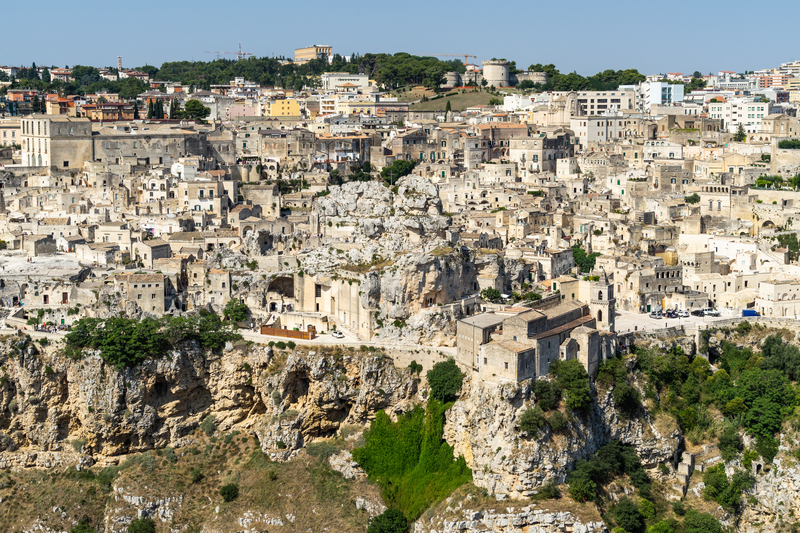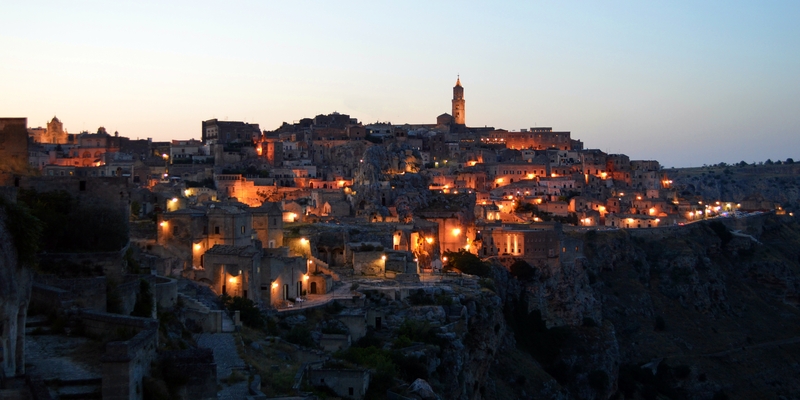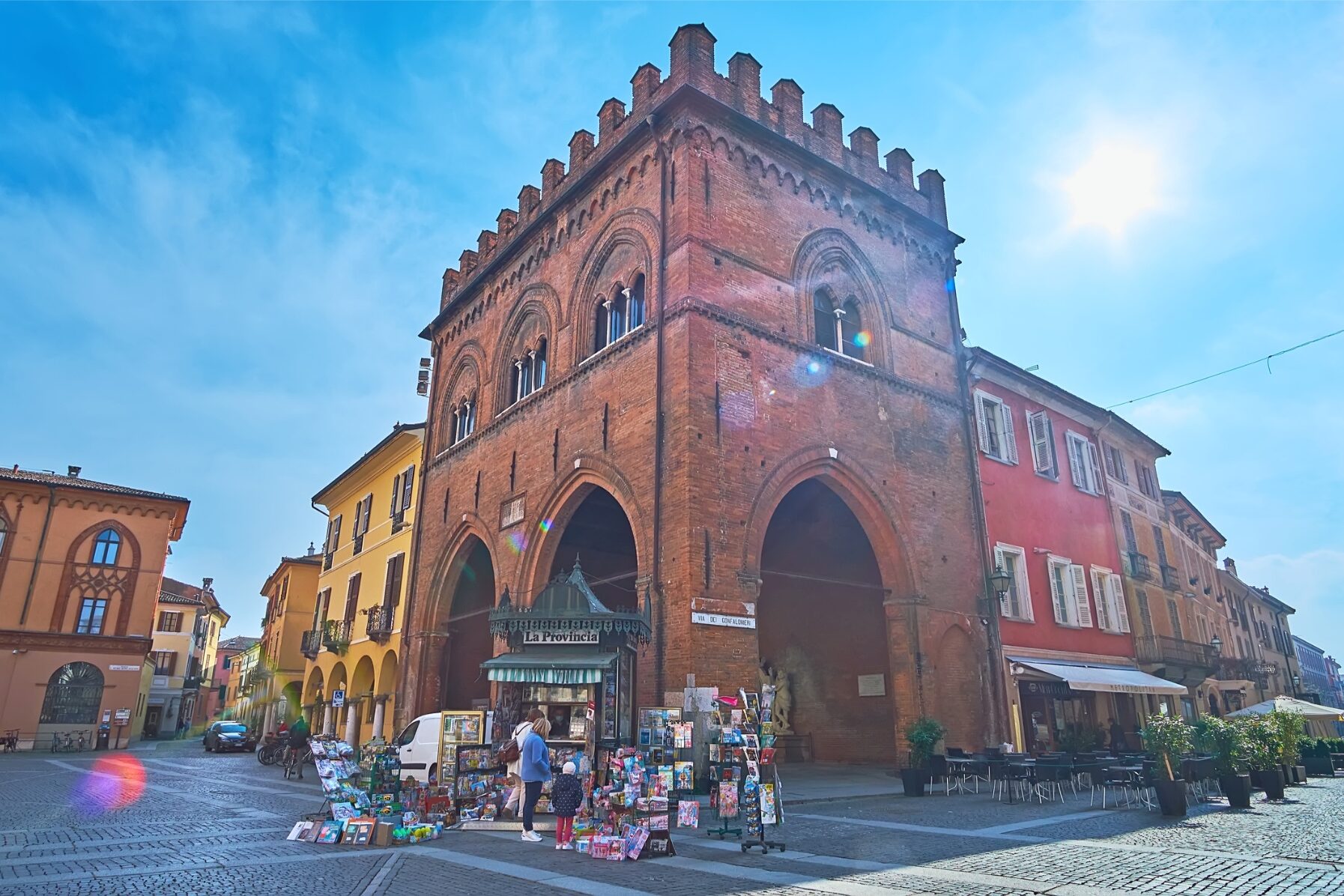The Sassi di Matera are an extraordinary example of ancient and sustainable human settlement in the southern region of Basilicata, Italy. These stone dwellings, etched into the limestone cliffs of Matera, represent one of the world’s oldest continuously inhabited cities, with origins dating back over 7,000 years.
What makes the Sassi so fascinating is their seamless blend with the natural landscape, as ancient locals used the existing rock formations to create homes, churches, and storerooms in a way that has attracted attention for its ingenuity and sustainability.
As many may know, the Sassi are famous for their unique appearance, resembling a city carved out of the earth itself: this distinctive characteristic, along with their deep historical roots, earned Matera the title of a UNESCO World Heritage site in 1993.
The Sassi are a real example of human adaptability and of the ability to create a thriving community in challenging environmental conditions: created out of necessity using the natural caves in the area, they were then extended into more complex structures, expanding over the centuries to accommodate growing families and communities.
Historically, the Sassi served as the foundational element of Matera’s society, housing generations of inhabitants who shaped the landscape through agriculture, pastoralism, and craftsmanship. They symbolize the ingenuity of early human settlements and their ability to sustainably integrate their lifestyles within the constraints of their environment.
These dwellings were continuously inhabited until the 1950s when the Italian government relocated the residents due to poor living conditions. This move sparked a debate about preservation versus modernization, leading to the eventual recognition of the Sassi’s value as a cultural and historical asset.

Artistically, the Sassi di Matera have long captivated the imaginations of filmmakers, artists, and writers, who have been drawn to their timeless beauty and ethereal quality. The ancient stone city has served as the backdrop for numerous films, including Mel Gibson’s The Passion of the Christ, due to its resemblance to biblical landscapes. Undoubtedly, cinematic interest brought along curiosity and tourism, and helped the area develop further.
Today, the Sassi di Matera have been revitalized and transformed into a vibrant living community once again: many of the caves have been converted into modern residences, boutique hotels, restaurants, and cultural centers, offering a unique blend of ancient architecture and contemporary luxury. This rebirth both preserved the historical and architectural significance of the Sassi and also contributed to Matera’s economic and cultural renaissance. Visitors from around the world come to explore its narrow alleys, discover its ancient churches, and experience the unique atmosphere of living history.
The Sassi stand as a memento of our ancestors’ ingenuity and creativity and as a symbol of the ongoing dialogue between the past and the present, making Matera known far beyond its borders as a city of unparalleled historical and artistic significance.




























